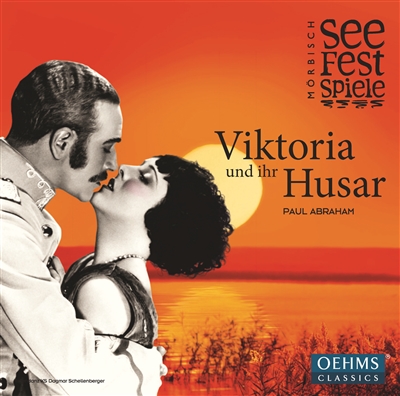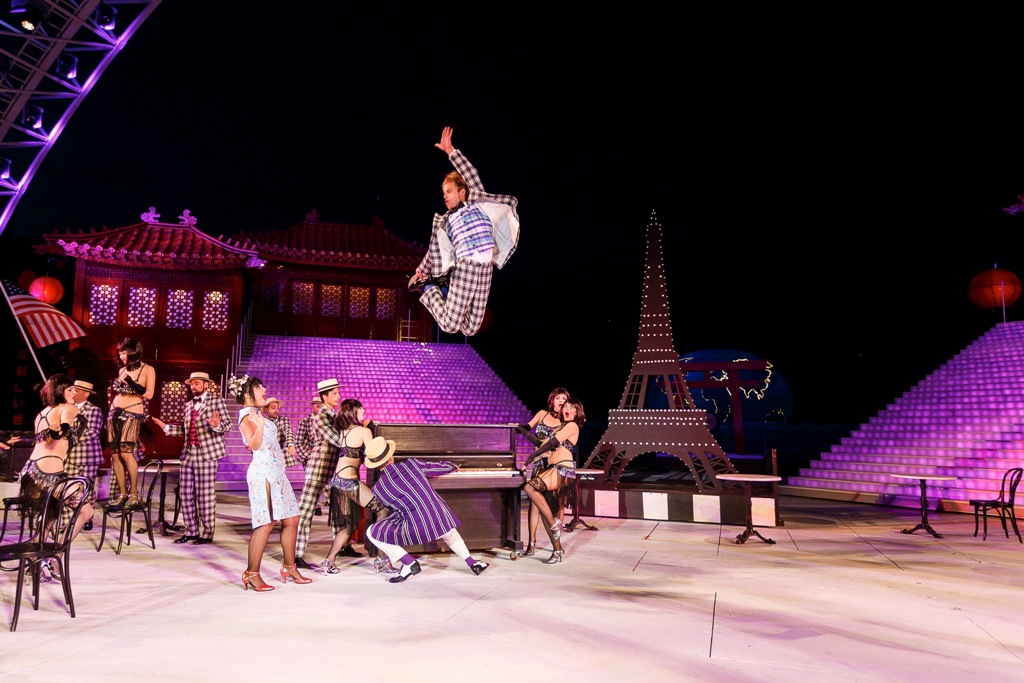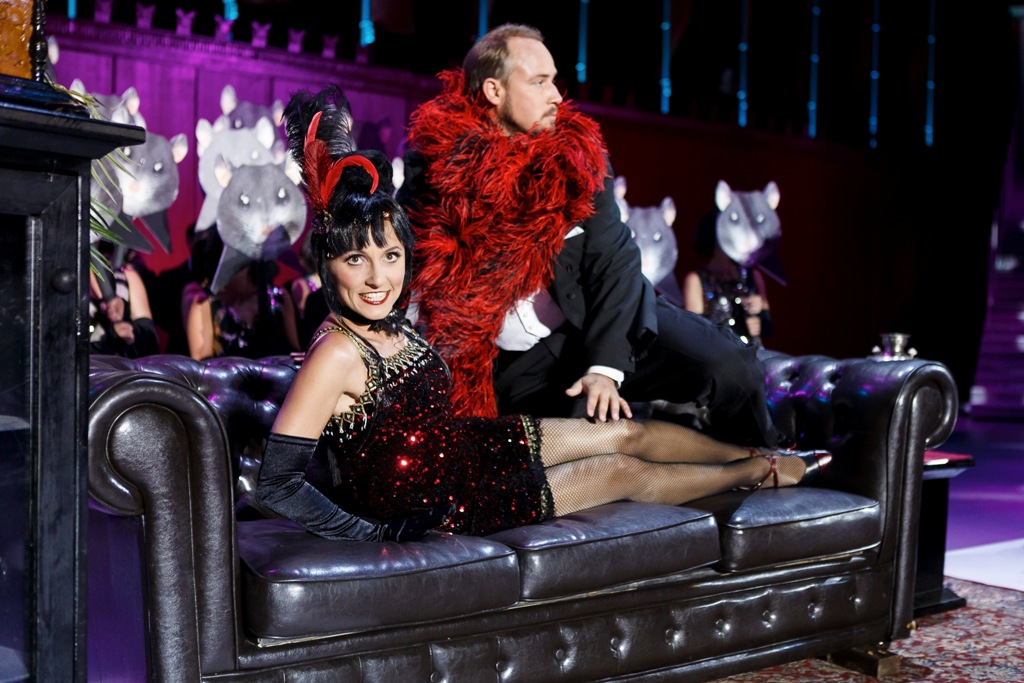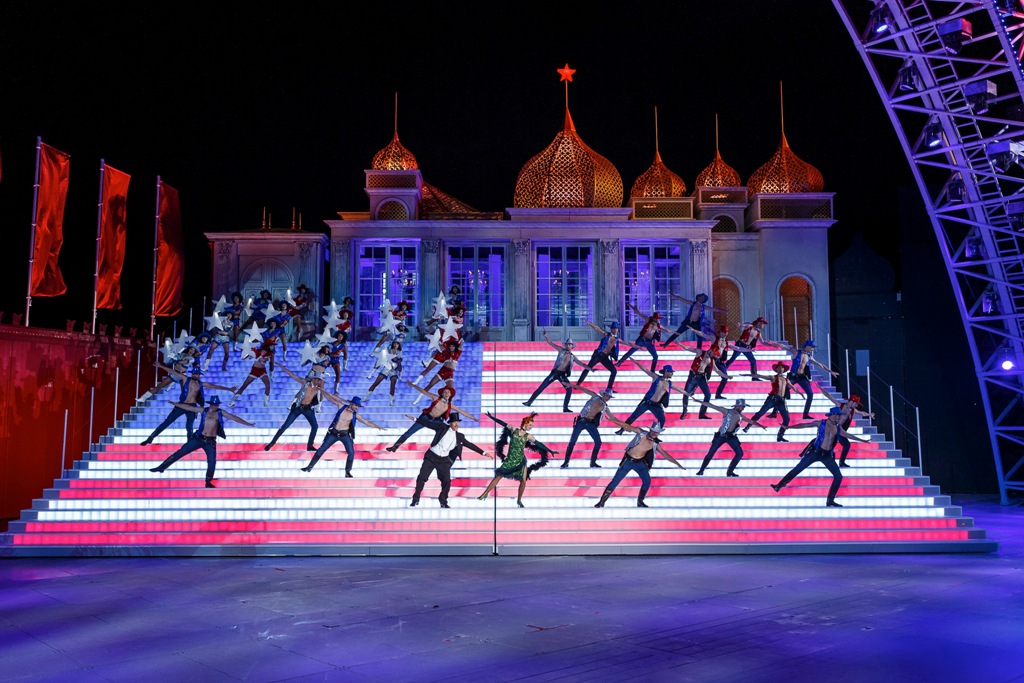Kevin Clarke
Operetta Research Center
20 July, 2016
Paul Abraham’s Viktoria und ihr Husar conquered the German language operetta scene in 1930 – and pretty much swept away the entire “old school” competition of Franz Lehár and Emmerich Kálmán, with a new “turbo” sound that stands on its own in the history of operetta. You might even say: in the history of musical theater. When Abraham unleashes the full jazz orchestra, with all its special effects, the results are dazzling. And ground shaking. Not even supposed master orchestrators like Lehár can compete with this deluxe sound. And neither the snappy melodies of Dadaistic dance number like “Do-do-do” nor the bitter-sweet longing of love songs such as “Pardon, Madame” lose their basic effectiveness when played in horrifyingly unstylish orchestrations, as the countless post-war recordings prove. Yet, even though a massive Abraham revival has been underway for years, accompanied by efforts to reconstruct the original 1930s sound, there have been no modern recordings of the full shows in combination with a stage production or radio broadcast. Here, finally, is the first new recording of an Abraham operetta, based on a performance edition by Hagedorn & Grimminger. It’s the cast album of the 2016 Mörbisch festival production of Viktoria und ihr Husar.

The cover for the 2016 cast album “Viktoria und ihr Husar” from the Mörbisch festival. (OEHMS Classics)
It’s hard to believe: Viktoria contains some of the best-known Abraham numbers of all time, be it the melancholic “Reich mir zum Abschied noch einmal die Hände” or the rousing “Meine Mama war aus Yokohama.” Yet, the number of Viktoria recordings is … shamefully limited. There is a 1951 complete version from Cologne conducted by Franz Marszalek, with Gitta Lind and Karl Friedrich in the title roles of Viktoria and her hussar. It doesn’t use the original orchestrations, and the jazz elements are toned down to a level as to make them almost unnoticeable. As a result, the score sounds like a stale Hungarian melodrama for opera voices, with never-ending pathos, and with little fun. And without any Roaring Twenties feeling. Still, the singing of the big romantic solos is impressive. Which is also true of the highlight version starring Rudolf Schock and Margit Schramm, conducted by Werner Schmidt-Boelcke. 14 numbers can be heard there. The best are the Schock/Schramm solos and duets. The worst are the comedy numbers which are appallingly “chaste,” considering the suggestiveness und explicitness of the text by Fritz Löhner-Beda and Alfred Grünwald.

The highlight version of “Viktoria und ihr Husar” with Rudolf Schock and Margit Schramm.
Things get worse on the 1960 highlight version with Peter Alexander, again conducted by Franz Marszalek, using another drastically changed orchestration that makes the glory of Abraham almost incomprehensible. Rita Bartos and Sandor Konya are the title role interpreters here, again using opera voices and little feeling for the special Abraham “Weimar Republic” style. And Peter Alexander in the comedy routines is a document of horrific “Schlager” times, not an interpretation for eternity. It’s downright embarassing to listen to him serenading “Mausi” and praising her nighttime naughtiness. (It cannot have been very special. But hey, this is the Sixties ‘Made in Germany.’)

The Franz Marszalek version of “Viktoria und ihr Husar” with Peter Alexander.
After that, there is a great gap. None of the laudable recent attempts to revive Viktoria were preserved on disc: not the Staatsoperette Dresden version, not the WDR concert version (using the Grimminger & Hagedorn version for the first time), not the Gießen staging conducted by Florian Ziemen with much energy, but an inadequate cast. So this Mörbisch edition stands more or less alone, which raises expectations. Also because the 74 minutes of music on one disc cover more material than any other highlight version so far.

A jazzy dance sequence from the 2016 “Viktoria und ihr Husar.” (Photo: Seefestspiele Mörbisch / Jerzy Bin)
As recent stagings of Abraham have made abundantly clear: it’s not enough to use a reconstructed 1930s score if you don’t know how to perform it properly. Also, finding suitable singers for Abraham’s music has proven rather difficult. In contrast to Berlin’s Ball im Savoy – conducted by Adam Benzwi – the Mörbisch production steers clear of any unusual or ground breaking casting. The nine listed soloists are all good, but they rarely stand out. And they often sound too much alike. Interchangable almost. This is especially true for the two comedy teams Janczi/Riquette (Andreas Sauerzapf and Katrin Fuchs) and Lia San/Ferry (Verena Barth-Jurca and Peter Lesiak). Their syncopated dance hits come across somewhat labored, missing the slapstick craziness and tongue-in-cheek tone heard on the original 1930s recordings. Also, the dance evolutions included here for the first time lack the infectious drive that is so essential to Abraham. But: they are there, and that’s a great plus.

Trying to evoke that decadent Weimar Republic feeling: act 2 of the 2016 “Viktoria und ihr Husar” with an army of mice in the back for the famous “Mausi” duett. (Photo: Seefestspiele Mörbisch / Jerzy Bin)
Conductor David Levi – or the sound engineers – don’t move the special orchestra effects close to the microphones. All those stuffed trombones, xylophones, saxophones, solo pianos, harps, bells etc. are not put center stage, acoustically speaking, but remain in the background. Which is a real shame, because these are the elements that make this recording unique and a must-have for any Abraham fan. More imagination in terms of sound design would have been a benefit.

Andreas Steppan as John Cunlight, the US ambassador, with Dagmar Schellenberger as Viktoria, the blonde bombshell, in the background. (Photo: Seefestspiele Mörbisch / Jerzy Bin)
The title role is taken by Mörbisch intendant Dagmar Schellenberger. She gives Viktoria some luscious floating top notes, and sounds ravishing in the elegiac moments of the score. She is best, to my ears, when she interacts with Andreas Steppan as Ambassador Cunlight. He seems to be an actor with a strong natural singing voice, and in their duets Schellenberger sounds particularly liberated, vocally, paying great attention to textual nuances. She also gives her lower notes some “dirty” coloring that is becoming in Abraham. I found their “Pardon, Madame” the highlight of the disc, even if the orchestra misses the nostalgia of this slow waltz completely. (Why is Levi so afraid of extreme tempo shifts and extreme dynamic contrasts?)

Michael Heim as the tenor hero in “Viktoria und ihr Husar,” passionately adressing Dagmar Schellenberger as Viktoria. (Photo: Seefestspiele Mörbisch / Jerzy Bin)
When Schellenberger sings with Michael Heim as Stefan Koltay, the hussar, matters become “flat” by comparison. He should have listened to more Tauber recordings prior to singing Koltay. The part demands courage to embrace melodrama, kitsch and the many sighs written into the score by Abraham. What you get, here, is a well-sung “neutral” version of the vocal lines, but little star quality. And Koltay deserves star quality. (Schock has lots of that, by the way, and definitely more vigor.)
There are massive cuts in the introductions and finales. That’s especially unfortunate because those are the moments where you can hear what is different between the 1930 version and the many later revisions.
Since the Mörbisch team are the first to go into the recording studio and capture Viktoria for a new generation of listeners, it would have been more than welcome to have the entire (!) score on two discs. I myself would have gladly paid the extra buck for that, especially since this disc is a budget release on OEHMS Classics!

Katrin Fuchs as Riquette and Andreas Sauerzapf as Janczi in “Viktoria und ihr Husar”: in the background you see the Japanese decoration for act 1. (Photo: Seefestspiele Mörbisch / Jerzy Bin)
You might ask: so what happens next? Will someone like Ulf Schirmer take the Grimminger & Hagedorn scores (there are a few of them by now: Viktoria, Blume von Hawaii, Ball im Savoy, Roxy und ihr Wunderteam) and record them with his Munich forces for cpo? I am not a fan of Schirmer’s operetta style or Lehár cycle, but I must admit that his Giuditta has more bounce and orchestral splendor than David Levi’s Viktoria. Will the Komische Oper Berlin ever issue their Ball im Savoy on disc (or DVD), with Dagmar Manzel and Katharine Mehrling as two outstanding modern-day Abraham interpreters? Will one of the big record labels give us Abraham with a novel sound and novel singers, maybe with one of the advocates of “Period Music” such as René Jacobs or Marc Minkowki? It doesn’t seem very likely. So the 2016 Viktoria und ihr Husar remains an important release that points to way to the future, no matter how long it takes for others to follow the lead. And just as an aside: this Abraham disc is a major improvement on the recordings from Mörbisch from the Harald Serafin years which were a stylistic nightmare, orchestrally and otherwise. Miss Schellenberger cannot be lauded enough for giving Abraham the international attention he deserves with a big festival production.
Till anyone follows the Mörbisch lead, I shall enjoy Schellenberger’s sugar coated “Liebe und Glück sind nur ein Traum,” again and again. And wait for a possible DVD version of this Mörbisch production. By all accounts, it seems to be a visually striking production by musical comedy “expert” Andreas Gergen. (Read Robert Quitta’s review here.) The only people complaining about such a snappy song-and-dance approach to operetta are the old Serafin fans (they all seem to work for ORF), and those who haven’t understood that Abraham’s glorious operettas are not meant to be performed like banal 1970s TV retro-events, but like Hollywood extravagazas. Gergen understands this, as does Schellenberger. If only the record procuders/sound engineers had understood it, too. With Abraham: more is more, and an over-the-top approach to sentimentality, drama, dancing, syncopation, orchestration and sheer opulence is better. Abraham and his librettists thought big, and their shows work best when they sound big, brilliant and slightly demented. With an ironic wink. Because this is “late” operetta that deconstructs itself, as a genre, for maximum effect. Which makes it highly modern, from our post-everything perspective.

Ballet scene from the 2016 “Viktoria und ihr Husar.” (Photo: Seefestspiele Mörbisch / Jerzy Bin)

“Cast album” is a bit of a misnomer because Morbisch usually has alternating casts for most of the lead roles. As a rule, one set sings on the Oehms CD hilite disc and the other on the Videoland DVD. Viktoria und ihr Husar is said to be the production that led to Schellenberger’s demise as Intendant at Morbisch.
Bill White